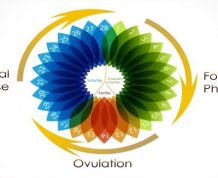For many years women have been asked a simple question by their OB/Gyn, “What was the first day of your last period?” When that blank look crosses our faces we all think the same thing, “Oh crap! I should have written that down!” Or when we are trying to conceive and we can’t time our ovulation days? I’ve been there, done that- as I’m sure most of you have. But there are ways to help remedy this problem. Claim Your 20 Free Pregnancy Tests – Click Here

This calendar could be in your phone, work planner, or even a calendar hung up at home. Anything with a full month’s view is perfect. Pick a symbol that you will recognize and know is your period symbol. Perhaps a red dot? A triangle? A blue square? It’s really up to you, whatever you feel comfortable with. Be sure to mark the first and last day of this cycle. After one month you might be able to “guesstimate” when you will start again but it’s best to keep this calendar up for a few months. This will determine if you’re “normal” or if you need to speak with your gynecologist about becoming more regular. This will also help you determine when you may ovulate, down to the date.

You’d be surprised what you can find only these days. Everything from quizzes to find out the sex of an unborn baby on up to how to plan your next period, and absolutely everything in between. There are “menstrual calculators” out there as well, simply Google those keywords. While you’re online feel free to also search the ovulation calculators.

Sounds crazy right? Go to your phones app store and search for trackers. There are at least 3 fertility gadgets that are made specifically for period and ovulation tracking. How genius? Something most women never leave behind, we use it for email and social media so why not for our health?

Surprisingly there’s not too many ways to actually keep track of something this “special.” But keeping track is very important, this can’t be stressed enough. If there is something medically wrong that you may not be aware of yet, tracking your periods can bring this issue to light. Also tracking may be used to plan a pregnancy, or to avoid it. The average female will ovulate 14 days prior to the first day of her next period, and for a few days prior to after as well. This is a key time for all females. This is when your window is open for pregnancy, or the time when you need to make sure you’re backed with good birth control.










Comments